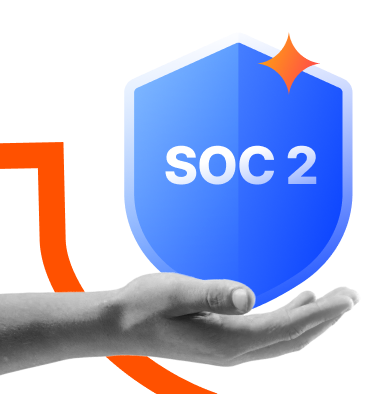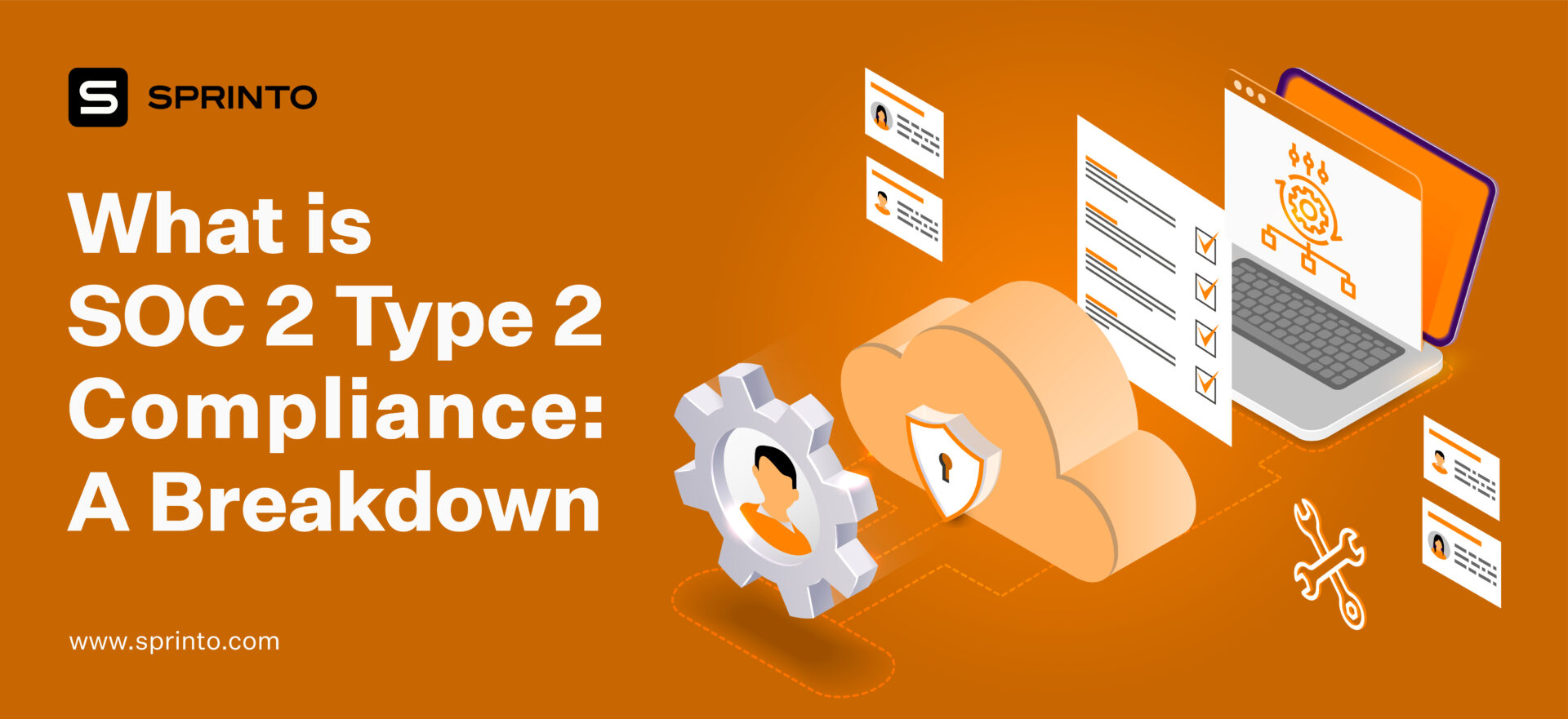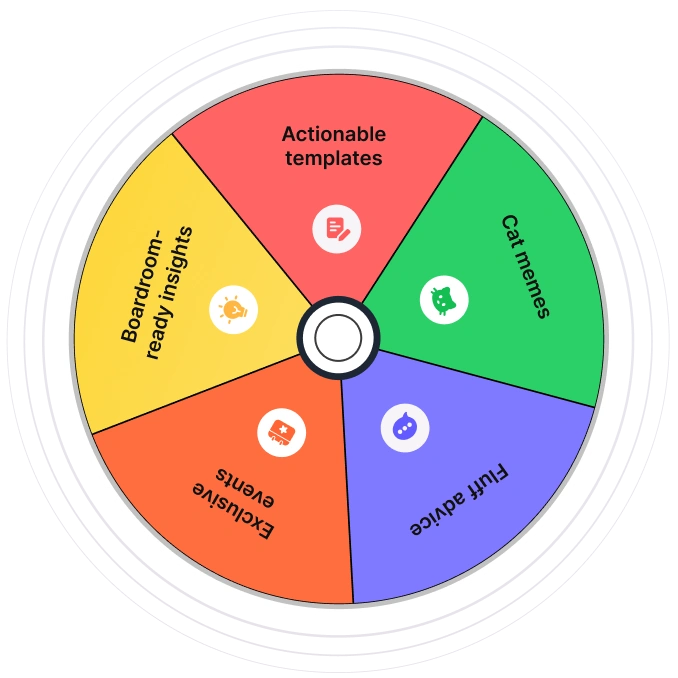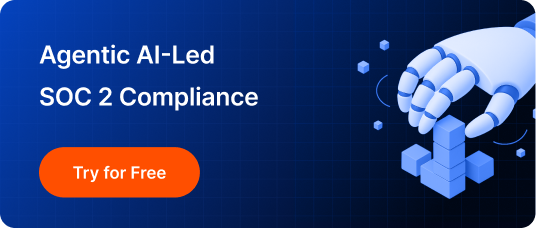Security questionnaires are piling up, procurement stalls are on page two, and your sales team is begging for a shortcut. The solution: a current SOC 2 Type 2 certification.
Unlike its point-in-time cousin (Type 1), Type 2 proves your controls run smoothly for months, not merely look good on audit day. And it’s quickly becoming the trust badge every enterprise buyer scans for first.
📋 Quick Summary in 60 Seconds
Benefits of SOC 2 Type 2:
- Demonstrates controls are operating effectively over time (3–12 months).
- Boosts trust with customers of all sizes, speeds up procurement, and unblocks sales opportunities.
- Reduces repetitive security questionnaires and strengthens overall market credibility.
Challenges with SOC 2 Type 2:
- More costly than Type 1 (USD 30k–80k in the first year).
- Requires ongoing monitoring and evidence collection over several months.
How Sprinto Helps:
- Automates continuous monitoring and evidence collection, keeping your systems always audit-ready.
- Provides a guided roadmap from readiness to audit, minimizing manual effort and reducing compliance overhead.
- For SaaS and cloud companies looking to win deals faster while simplifying compliance, consider Sprinto for SOC 2 Type 2 readiness. Book a demo here.
What is SOC 2 Type 2 Compliance?
SOC 2 Type 2 compliance is an independent attestation by a licensed CPA firm that verifies your security controls are not only well-designed but also operate effectively over a period of 3 to 12 months.
It’s based on the AICPA’s Trust Services Criteria – covering security, availability, processing integrity, confidentiality, and privacy – and is widely required by enterprise buyers to prove ongoing data protection.
SOC 2 Type 2 becomes necessary because buyers increasingly ask for proof that vendors run a tight security ship. Gartner projects that 60% of organizations will treat a supplier’s security posture as a primary buying criterion by 2025. SOC 2 Type 2 is one of the fastest ways to clear that bar.
In a nutshell, a clean Type 2 report signals that:
- Your controls are both well-designed and have been proven effective over time.
- Stakeholders, customers, partners, and even your board can rely on an independent, timestamped record of how you protect data.
- You’ve reduced the back-and-forth of lengthy security questionnaires, freeing your team to focus on product and growth.
SOC 2 Type I vs Type II
A SOC 2 Type I report shows you planned the proper controls; a Type II report proves you live by them.
If enterprise trust and faster sales cycles are on your roadmap, aim for Type II.
| Dimension | SOC 2 Type I | SOC 2 Type II | Why it matters |
| Snapshot vs period | “Point-in-time” review of control design only | Tests control design and operating effectiveness over 3–12 months | Type II offers stronger, time-based proof that processes work |
| Audit depth | Limited evidence | Evidence plus sampling, log review, and walkthroughs | Greater assurance for risk-averse enterprise customers |
| Report length | 25 to 40 pages (typical) | 70-plus pages with auditor test results | More granular data for vendor-risk teams and regulators |
| Typical timeline | 4 to 6 weeks (prep and audit) | 6 to 18 weeks prep with a 3 to 12-month audit window | A longer runway is needed, but the report carries more weight |
| Ideal use case | Early-stage SaaS proving control design | Scaling providers proving ongoing effectiveness | Many large buyers list Type II as a contractual requirement |
| Relative cost | Lower (one-off engagement) | Higher (evidence gathering, monitoring) | Budgeting early avoids sticker shock later on |
| Renewal cadence | Can be refreshed annually if desired | Must be refreshed annually to stay credible | A continuous compliance mindset keeps you front-of-line for deals |
Why should you consider becoming SOC 2 Type 2 compliant?
SOC 2 Type 2 compliance is the fastest way to reach bigger deals and enjoy fewer security mishaps. Here’s what that means:
1. Win and hang on to enterprise contracts
When a prospect’s vendor-risk portal asks for proof, a clean Type 2 report checks the biggest box on the first try, most enterprise buyers would reconsider if a vendor can’t supply a current SOC 2 report. “Current” almost always means Type 2.
2. Speed up revenue without cutting prices
Third-party risk platforms report that enterprise buyers complete security reviews weeks faster when a vendor presents a current SOC 2 Type 2 report. Faster passage through red tape translates directly into quicker ARR recognition.
3. Shrink the consequences and cost of breaches
IBM’s Cost of a Data Breach 2024 prices the average incident at USD 4.88 million, and that figure climbs to USD 5.17 million when the compromised data lives in public clouds, a reality for most SaaS providers.
Operationalized SOC 2 controls around access, logging, and encryption, validated for months by a third-party auditor, materially lower the likelihood and impact of a seven-figure bad day.
4. Give boards and investors evidence, not promises
PwC’s 2025 Global Digital Trust Insights shows that 77% of executives plan to raise cyber budgets in the next 12 months, with 48% channeling that cash into data-trust programs. Showing a stamped Type 2 report during budget season is an excellent look for your business.
5. Retire the 200-line security questionnaire
Drop a fresh SOC 2 Type 2 PDF into your trust portal, and watch the inbox quiet down. Security engineers reclaim hours, sales teams get momentum, and your customer-success crew avoids one more follow-up call.
Why does SOC 2 Type 2 matter for SaaS and cloud companies?
Writing software in the cloud? The stakes and the payoff only climb higher. Here’s why Type 2 is non-negotiable for SaaS and cloud vendors:
- A growing, high-density risk surface: Enterprises with 1,000+ employees handle 177 SaaS applications daily. Every new integration is a fresh attack path, so buyers favor vendors whose controls have been road-tested for months.
- Cloud breaches carry the steepest price tag: Public-cloud incidents remain the most expensive flavor of breach, at an average of $5.17 million. The Trust Services Criteria (TSC) baked into SOC 2 demand hardened IAM, continuous monitoring, and encrypted data flows. These are precisely the levers that nudge those costs down.
- Security teams are doubling on SaaS oversight: The Cloud Security Alliance’s 2025 CISO survey found that 70% of organizations have now formed dedicated SaaS security teams. That’s formal proof that your buyers are watching more closely than ever.
- Marketplace and partner doors open: AWS, Microsoft, Google Cloud, and most fintech or health-tech alliances list SOC 2 Type 2 (or ISO 27001) as a non-negotiable prerequisite.
All set on the “why”? Let’s undo the nuts and bolts your auditor will probe so you can get a head start on evidence collection.
SOC 2 Type 2 requirements
SOC 2 requires organizations to design, document, and consistently operate controls that satisfy the AICPA’s Trust Services Criteria and have their effectiveness attested by a licensed CPA.
These are the five TSCs that you’ll be dealing with:
| Trust Services Criterion | What it proves | Evidence auditors sample |
| Security (mandatory) | Systems block unauthorized access | MFA policies, firewall rules, and incident-response logs |
| Availability | You meet uptime and recovery promises | DR runbooks, failover tests, capacity dashboards |
| Processing Integrity | Data is processed completely, accurately, and on time | Change tickets, automated QA, and reconciliation reports |
| Confidentiality | Sensitive data stays shielded end-to-end | Encryption keys, DLP rules, quarterly access reviews |
| Privacy | Personal data is handled per stated commitments | DSAR workflows, retention schedules, anonymization jobs |
Cross-cutting themes auditors trace from policy to proof
- Governance and risk assessment: Documented risk register and board oversight minutes
- Access management: Least-privilege roles, recertification, off-boarding checklists
- Change and release management: Peer-reviewed pull requests, CI/CD approvals
- Continuous monitoring: SIEM alerts, vulnerability scans, intrusion-detection baselines
- Vendor management: Risk-tiering matrix, signed DPAs, annual reassessments
Auditors expect to see controls working day in and day out. Keep that mindset; next year’s renewal will feel like a formality rather than a fire drill.
SOC 2 Type 2 certification process: 9 steps
Mapping out your first Type 2 audit feels daunting until you realize it follows the same nine checkpoints every successful SaaS or cloud provider walks through.
If you want to know where you stand currently, before starting with the process, get a self-assessment done:
Download SOC 2 self assessment
Below is the SOC 2 Type 2 certification process with nine core steps:
1. Define the scope and risk landscape
Your auditor can test only what you put inside the boundary, so start by listing every production workload, data flow, and third-party tool that moves customer information. Over-scoping burns budget; under-scoping gets you a short report nobody trusts.
Scoping sets the rigid boundary for your audit: list every workload, data flow, and vendor that touches customer data; decide which optional Trust Services Criteria matter to your buyers; and lock in a 3-, 6-, or 12-month observation window so the evidence set is clear before fieldwork starts.
- Map data flows and classify systems into in-scope vs. out-of-scope to prevent surprises.
- Choose optional TSCs and the observation window that aligns with service commitments and timelines.
- Document sub-service carve-outs and complementary user controls (CUECs) so auditors know where your responsibility ends.
2. Run a readiness (gap) assessment
Once the scope is fixed, the next move is a structured gap assessment: a side-by-side comparison of your current controls, policies, and evidence against the AICPA Trust Services Criteria.
The exercise means digging into documentation, sampling logs to prove controls run, rating each gap by risk and effort, and assigning an owner and deadline so nothing lingers in limbo. A remediation register that ties every gap to its corresponding criterion keeps auditors from reopening questions at fieldwork.
Manual gap tracking quickly becomes chaotic, which is why many teams lean on compliance-automation platforms. These platforms connect to your cloud stack, auto-test controls on a cadence, and feed the results into a dashboard that ranks gaps by audit impact.
Sprinto’s dashboard drops the findings into a priority-oriented task list, so the items that block an audit bubble to the top instead of hiding behind low-risk to-dos. That clarity turns the “where do we even start?” conversation into a punch list you can knock out in sprints.
3. Remediate control weaknesses
Gap remediation usually means tightening IAM rules, enabling MFA, or documenting incident-response strategies. Keep screen captures, tickets, and change logs; they become evidence later.
For example, Sprinto includes ready-to-use policy templates and change-management workflows; you can adopt them as-is or swap them in your docs without leaving the platform. Every approval, pull request, or policy acknowledgment is stored with a timestamp, so future evidence gathering is already in motion.
4. Automate evidence collection and continuous monitoring
Evidence is the currency of a SOC 2 Type 2 audit. For every control, auditors want proof drawn from the period under review. The collection works in two stages:
- Mapping controls to artifacts. Each policy item is tied to a concrete output: IAM logs for MFA, ticket IDs for change approvals, and S3 inventory for backup encryption.
- Pulling data from the source. Evidence comes from authoritative systems (cloud logs, HRIS exports, ticketing platforms) so auditors can trust timestamps and integrity.
Yes, teams can gather this material manually, but the overhead is brutal. A mid-sized SaaS can easily spend 150-plus staff hours per audit cycle chasing artifacts, redacting sensitive bits, reformatting files, and re-uploading every ticket change.
Why does it matter? Because auditors sample the evidence set to decide whether each control “operated effectively.” If logs are missing, stale, or inconsistent, they issue follow-up requests that stall fieldwork and risk control exceptions.
Sprinto’s API integrations automate up to 90% of that evidence collection and tag each item to the right control with a traceable audit trail. Real-time dashboards light up if a control doesn’t work, and proactive alerts give you a chance before issues escalate.
5. Select and onboard a licensed CPA firm
Pick a CPA firm early, ideally six months out, so scoping questions don’t derail fieldwork.
Start by shortlisting auditors concerned exclusively with SOC 2, have cloud-native clients, clean peer-review reports, and tooling for remote evidence reviews. Confirm they’re independent of your VC and counsel, ask for sample timelines, and probe how they handle exceptions.
If you’re on Sprinto, its network of pre-vetted CPA partners already knows the platform’s evidence feeds and fast-tracks kickoff.
Here’s a list of Sprinto’s SOC 2 auditors’ network:
| Name | Type | Description |
| Accorp Partners CPA LLC | Audit Partner | US-based CPA firm offering SOC 2 and other compliance audits. |
| Johanson Group LLP | Certification Body | US-based audit and certification firm; provides SOC 2 attestation. |
| Prescient Security | Certification Body | US-based, CPA-led audit and cybersecurity firm that offers SOC 2 and pentest audits. |
| Sensiba LLP | Certification Body | CPA firm providing audit, advisory, and SOC 2 attestation services. |
6. Launch the observation window
For Type 2, controls must operate for three to twelve consecutive months (best practice is at least six). Many SaaS providers choose a full year so the report aligns neatly with fiscal schedules.
Use this period to prove consistency: schedule quarterly access reviews, run disaster-recovery drills, and track every change through your ticketing system. Sprinto logs each event automatically, so you have a point-and-click answer when the auditor asks for evidence from a particular time period.
7. Auditor fieldwork and testing
At the end of the window, the auditor samples logs walks through workflows, and interviews control owners to verify each control worked as designed. Expect follow-up requests and walkthrough calls.
8. Report issuance and management response
After testing wraps up, the auditor sends a draft SOC 2 Type 2 report that lists each control tested, any exceptions, and a provisional opinion.
Exceptions are control deviations uncovered during sampling; major exceptions signal systemic failures, while minor ones are one-off misses that don’t undermine the system’s integrity. Auditors flag them early so you can clarify logs, remediate gaps, or supply fresh evidence before the opinion is sealed.
A management response follows every noted exception. Keep it concise: acknowledge the finding, explain the root cause, outline corrective action (with owners and deadlines), and state how to prevent recurrence. This narrative shows customers and regulators that issues are understood, contained, and already on a fixed track.
Once responses are locked, the firm issues the final, signed PDF. Most teams publish a scrubbed copy in their trust portal and share the full version under NDA.
9. Continuous compliance and annual renewal
A SOC 2 Type 2 report “ages out” after 12 months, so most buyers insist on a fresh annual audit. When the coverage window ends before the following report is ready, management issues a bridge letter, good for roughly 90 days, that self-attests no material has changed.
Renewal looks like the first audit: engage (or re-engage) a licensed CPA, confirm scope and observation period, stream new evidence, address any exceptions, review the draft, and sign off on the final PDF.
Because Sprinto’s continuous control monitoring never shuts off, your live dashboard shows exactly how close you are to 100 % audit readiness on any given day.
If you add another framework (ISO 27001, HIPAA, NIST CSF), the same evidence pool often covers 80% of the new requirements; it’s easy to scale compliance without tripling effort.
What can you expect in an SOC 2 Type 2 audit?
A SOC 2 Type 2 audit starts with scoping, moves to intensive evidence uploads where auditors sample logs, tickets, and user lists from a 3 to 12-month control window, follows with rounds of clarifying questions to confirm controls actually worked, and ends with a draft and then final report that flags any exceptions.
Here’s what you’ll come across during the process:
1. Kickoff and Planning
The audit officially starts after your observation window closes. Your licensed CPA firm will schedule a kickoff call to confirm the scope, swap credentials for the evidence portal, and lock down a timeline.
If you’ve been collecting artifacts all year, this phase can wrap up in days. If evidence is scattered, expect a chaotic week or two as you pull everything together.
2. Fieldwork: Evidence Review and Interviews
Next comes fieldwork, when auditors sink into the artifacts and talk with control owners. They review samples of access logs, change-management records, vulnerability scan results, backup drills, and incident tickets.
Short interview sessions, often over video, allow them to ask follow-up questions like, “Show me how a high-severity alert is escalated.” Well-organized teams typically finish fieldwork in two to four weeks; broader or poorly scoped environments may run longer.
3. Draft Report and Management Response
Once sampling ends, the auditor assembles a draft report. The report will include the auditor’s opinion on control design and operating effectiveness, plus line-item test results and any exceptions.
Management gets a chance to attach a response, which is especially useful if you remediate an issue before fieldwork ends. Finalizing and signing the PDF usually takes another two to three weeks.
Two Common Surprises for First-Timers
- Mostly remote work: Modern SOC 2 audits rely on secure portals rather than onsite visits. Continuous-monitoring tools (Sprinto is a popular choice) pay off by keeping evidence updated and easy to share.
- Annual renewal clock: When the stamped report lands in your trust center, the countdown to next year’s audit begins. Controls must keep running, exceptions will be re-examined, and continuous monitoring will help make the renewal a painless process.

Kickstart with our automated,
ready-to launch toolkit.
What’s included in a SOC 2 Type 2 report?
A SOC 2 Type 2 report contains the auditor’s formal opinion on your controls, management’s assertion, a description of your system and its boundaries, a controls matrix that shows what was tested and how it performed, and other company-specific information.
The finished PDF is a multi-section dossier that your customers can dissect. Here’s what’s in it:
- Independent service auditor’s report: The CPA firm’s formal opinion stating whether your controls were suitably designed and operated effectively.
- Management assertion: A signed statement from your leadership describing the system and attesting that the controls meet the Trust Services Criteria.
- System description: Detailed narrative of infrastructure, software, people, data flows, and sub-service organizations in scope.
- Trust Services Criteria, controls, and test results: A table of every control, the auditor’s test, and the outcome; exceptions are called out line-by-line.
- Other information (optional): This may include complementary user-entity controls, planned remediation, or additional frameworks covered.
Reports usually run 50 pages; bigger scopes can hit triple digits.
SOC 2 Type 2 attestation cost and factors that affect it
Getting SOC 2 compliant in 2025 typically runs $30,000 to $50,000 for most SaaS teams, but the total can climb toward $150,000 when you add readiness work, tools, and internal effort for larger or more complex scopes.
Here’s a detailed breakdown based on our cost research:
How to maintain SOC 2 Type 2 Compliance year-round?
A SOC 2 report is valid for 12 months, requiring annual audits. So how a business operates during those audits is what matters. Consistency is the real measure of SOC 2 compliance because it’s not about checking boxes once a year; it’s about proving that your controls work every single day. Here are seven essentials to maintain a SOC 2 Type 2 Compliance year-round:
1. Automate Control Mapping
Compliance drifts when controls aren’t monitored continuously and manual checks create blind spots. So you must automate the tracking of system configurations, access permissions, offboarding, policy acknowledgments, and training status.
2. Centralize and Structure Evidence
Don’t wait until the audit window to scramble for screenshots. Automate evidence collection and organize it by control and framework. A structured, always-on audit trail means you’re not just compliant once a year, you’re inspection-ready every day.
3. Enforce Change Management
Any change to infrastructure, vendors, or access can introduce compliance risk. Establish formal change management workflows with built-in approvals, version control, and audit trails to ensure all changes are tracked, reviewed, and documented properly.
4. Run Periodic Risk Assessments
Conduct risk assessments quarterly to identify new vulnerabilities, evaluate existing controls, and adjust mitigation strategies to ensure continued alignment with SOC 2 requirements.
5. Train Continuously
Deliver regular, role-specific training on security policies, phishing awareness, and incident response. Track completion and update content as threats evolve to ensure every employee understands and meets their compliance responsibilities.
6. Test and Remediate
Routinely test critical controls and validate remediation workflows to identify failures before they escalate. Document results, assign ownership for fixes, and shorten resolution cycles to maintain a strong compliance posture.
7. Engage Internal Auditors year-round
Conduct periodic internal audits, walkthroughs, and control validations to maintain continuous oversight of your compliance environment. Identify issues early, validate fixes promptly, and keep audit readiness high throughout the year.
How Sprinto helps you get SOC 2 Type 2 Compliant?
You’ve seen the nine-step process and the audit strategy. The only catch is that keeping every control on track for six-plus months can hijack entire sprints from your engineering team.
Sprinto closes that gap by turning SOC 2 work quiet, automated, and always up to date.
- Plug-and-play integrations (200+ and counting). Connect AWS, Azure, GCP, GitHub, Okta, Jira, HRIS platforms, Slack, and scores of others in minutes. Sprinto maps each asset to the right Trust Services Criterion, so the scope is accurate from day one and stays that way as you add new services.
- Real-time, continuous control monitoring. Every integrated system streams telemetry back to Sprinto, which runs fully automated checks 24×7. A live dashboard highlights passing, failing, and drifting controls; proactive alerts hit your inbox before an auditor sees an exception.
- Evidence on autopilot; up to 90 % collected for you. Sprinto pulls logs, tickets, and policy acknowledgments through secure APIs and tags each artifact to its control. When the observation window closes, the evidence library is sorted, timestamped, and auditor-ready.
- Async auditor collaboration. Sprinto’s dedicated Auditor Dashboard lets your CPA firm filter controls, review samples, and ask follow-up questions without back-and-forth emails. Because artifacts arrive in an auditor-approved format, your fieldwork finishes faster, often 100 % remotely.
- Speed and savings you can show the CFO. Sprinto customers report audits up to 5x faster and compliance budgets trimmed by roughly 60 % compared with manual or consultant-heavy approaches.
- One platform, many frameworks. Once your SOC 2 controls live in Sprinto, you can reuse the same evidence for ISO 27001, HIPAA, or NIST CSF.

Blitz past the finish line with us.
Frequently asked questions
SaaS businesses, firms that use the cloud to store sensitive customer information, and cloud service providers can get SOC 2 Type 2 compliance. While it isn’t a regulatory requirement, getting a Type 2 attestation instills confidence in your infosec practices.
You should consider a Type 2 audit once you are already SOC 2 Type 1 compliant and your customers ask for proof that the applicable controls are working effectively as claimed or as they should.
The costs to prepare for a Type 2 audit depend on your organization’s size, complexity (of systems & controls) of operations, audit readiness, and the type of auditor chosen. And with readiness assessments (optional) and other overheads, you are roughly looking at about $20000-$50000. Again, these are just ballpark estimates.
Soc 2 Type 2 controls include control environment, communication and information, risk assessment, monitoring activities, control activities, logical and physical access controls, system operations, change management, and risk mitigation.
A SOC 2 Type 2 report is valid for one year from the date of its issue. This means your organization should ensure continuous compliance of the relevant controls even after the certification.
You should consider a SOC 2 Type 2 audit once you are already SOC 2 Type 1 compliant and your customers ask for proof that the applicable controls are working effectively as claimed or as they should.
Pansy
Pansy is an ISC2 Certified in Cybersecurity content marketer with a background in Computer Science engineering. Lately, she has been exploring the world of marketing through the lens of GRC (Governance, risk & compliance) with Sprinto. When she’s not working, she’s either deeply engrossed in political fiction or honing her culinary skills. You may also find her sunbathing on a beach or hiking through a dense forest.
Explore more SOC 2 articles
SOC 2 Compliance Overview
SOC 2 Preparation and Documentation
SOC 2 Audit and
Reporting
SOC 2 Differences and Similarities
SOC 2 Updates & Management
SOC 2 Industry-Specific Applications
research & insights curated to help you earn a seat at the table.









